Monday 30 July 2018: Roger
After breakfast at the Sabean Hotel we took a stroll down the Main Street. The blue tuktuks swarmed the street like ants in search of crumbs. There are apparently over a thousand of these in this town of 50,000. Most of the shops are still closed as ladies set up their coffee shops with grass spread in front of the fire box and comfortable stools spread out ready for the morning rush.
At 10 we departed for the airport. I am Intrigued to see a third storey on one of the many partly finished buildings, reinforcing in place ready for the concrete pour, all held up by eucalyptus sticks. We passed young men sitting on piles of rocks with a hammer breaking them into smaller rocks.
I discovered that the dozens of incomplete multi-storey buildings in the town came about through corruption in relation to a previous government.
A friendly policeman greeted us and checked our passports before we entered the confines of the tiny airport.
Flying into Lalibella airport we passed over lots of cultivated land with small round-housed villages separated by deep ravines. Picked up in a clean, white van, we headed northeast up a valley then up into the hills. This relatively new road has many new houses being constructed on each side. Nowadays square houses with iron roofs are replacing the traditional round ones with thatched roofs. Unfortunately, although easier to build, the iron does not provide the insulation the thatched ones used to. The construction starts off with eucalyptus sticks making a frame; more sticks are added to make an enclosure; the roof goes on then the inside is plastered, as is the floor; then the outside is plastered. A mixture of mud and straw is used to make the plaster. It has to be just right; too much straw and a donkey may eat your house.
We climbed a steep part in the road with stone retaining walls and stopped at a lookout for great views back down the valley. A petite woman lugs a load of firewood up the hill to sell in the town while a boy looks on, I am sure pleased he can avoid that task. These new roads and much of the new infrastructure is being provided by China – apparently originally they provided the labour in the form of prisoners from China. 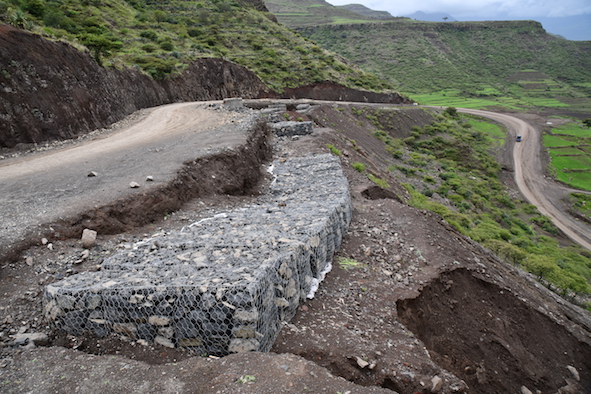




Not far along the ridge we dropped down into the city of Lalibella. Situated on a ridge it drops off steeply on each side with houses often perched on cliff edges. With around 50,000 people the town is spreading rapidly with a number of government built houses.
Thousands of concrete pipes line fields below, all part of the China input for future infrastructure.
Although there are some sewerage pipelines most houses are not connected and still use long drops. Most houses have electricity but like the rest of the country they have many power cuts. Running water is also piped to most houses but the supply is inconsistent.
A little way through the town we turned down a cobbled street passing a bunch of tidy stalls made from corrugated iron. This area was a little more tidy containing a number of small hotels. Our hotel Maribela is pretty new and situated on the top of a hill with expansive views over the land below.
After lunch we headed back through town to what was around 900 years ago a solid rock ridge. Then along came King Lalibella who decided to create a few churches. Rather than cutting the stone into blocks and building a church he decided to cut the stone and carve a church. The first and the largest monolithic church in the world is, to say the least, a great feat of engineering. The rock has been chiselled away all around the structure providing drainage and access, then columns chiselled out around the outside. From there they have chiselled their way inside creating internal columns to hold up the roof. A bread room has been chiselled into the rock to the south and entrances made on the north, west and east sides.
Some of the outside columns have been replaced with block ones by UNESCO and a large structure has been built well above the church to protect it from the elements.
There were also two little corrugated iron boxes which I thought were dog kennels. Oops got that wrong – “those are for the security guards to sleep in”
After a look inside we exited and headed through a hole in some rock to the next one. We were able to circle around and up onto the rock between the two structures for a good view of both. There are no safety rails but only one tourist has fallen to their death, and they were not following directions.
On each side of the second monolithic church are two much smaller semi-monolithic churches. In each of these structures priests sat or stood around while getting photographed by the tourists.
Apparently part of the reason the king had these built was to attract visitors to the area. It appears he certainly got that bit right. There are two more semi-monolithic churches here but they are closed for repairs just now. Apparently all these sites are funded and administered by UNESCO.
We headed down and out through what served both as a path and a drain, which continued down into what the king named the river Jordan, which contains a cross and baptism pool designed so locals didn’t have to make the pilgrimage to the Middle East.
From here we headed to the town centre, chatting to the many local kids there keen to practice their English.
A stroll down a nearby street revealed a local burger butcher, identified by lungs and trachea hanging outside, then to an ale house identified by a stick outside the door with a tin on it. We went in and Yohannes sampled the local beer brewed from honey.
As we exited the bar the local women had gathered to clean the street, sweeping and picking up rubbish.
We were lead into a hall where a bunch of teenage girls were practicing for an upcoming dance to the beat of a plastic drum. We even got to join in and later take a group photo followed by a small donation.
Back at Hotel Maribela we sat on the couch at the end of the dining room. The manager decided they should light the open fire. Five staff undertook this task: some sticks 100mm x 1m were put vertical in the fireplace, meths added and then the attempted lighting of a plastic bag. “Woof” the meths ignited, five staff reeled backwards, the flames died out and the process started again as they tried to get the fire going at the top of the sticks. To be fair, after over an hour of perseverance they did have a bit of a fire going.
Tuesday 31 July 2018
We had a leisurely breakfast then decided to wander around a bit before our 9am pick up to see if we could get a few photos. We were soon mobbed by kids clamouring to try out their English and asking for money to support their schooling. One thing about this place: there are always lots of people hanging about.
We got some good pictures of some bone crusher or bearded vultures (lammergeiers), and black kites which were soaring on the thermals near the hotel.
After reconnecting with Yohannes our first stop was the church of St George. This is probably the most famous of all the Lalibela churches. It is carved in the shape of a cross and is very impressive. I still cannot fathom why anyone would go to all the difficulty of carving a church underground out of granite – surely it would be easier to build above ground – especially considering the large drainage ditches that needed to be dug out for managing the water. Earlier in the morning we passed a group of men chipping away at some granite rock with hammers – I commented to one of the kids hanging around that it made it easy to see just how difficult carving the churches out of the granite would have been back in the late 12th century. He quickly advised that the churches were actually carved by angels (one of the common beliefs espoused by the church here).
From the church we could see a small local market so wandered over to take a closer look. All sorts of wares were laid out including spices, vegetables, cooking utensils and much more. Apparently at the Saturday markets, which are the main markets of the week, you can barely move for all the people.
Next we visited the final group of churches. There is some debate between the church and the scholars whether these were originally built as churches or as a palace, banquet hall, kitchen and church complex for the king. Based on what I saw I am siding with the scholars but they are all used as churches today. Again I had to marvel at the amount of work involved and the intricacy of some of the carvings. These churches are all interconnected with a series of tunnels. You can walk around the top and take the main entrance but we opted to take the path known as “passing through hell”, a pitch black tunnel through the granite – left hand on the roof so we didn’t hit our heads and staying as close to the right as possible to avoid big rocks protruding from the left – it was slow progress. Roger gave Yohannes quite a fright after the two of us had exited and Roger didn’t respond to any calling and hung around in the tunnel for a while!!! Luckily I think Yohannes generally appreciates Roger’s unique brand of humour.
We stopped for lunch at a uniquely shaped restaurant with nearly 360 degree views over the surrounding countryside then headed to a rather touristic “traditional coffee ceremony”. We continue to be impressed by how green and fertile this area is. Admittedly it is the rainy season right now and there has been rainfall every evening but given that we are at 2700m above sea level here and nothing grows at that height in NZ the lushness has surprised us.
After we had been dropped back at the hotel we wandered into the main part of town to change some money at the local bank – I continue to be extremely grateful that I grew up in a developed country with so many amenities. The bank was crowded and stuffy and the processes seemed incredibly manual with multiple pieces of paper being exchanged during the transaction.
As we neared the hotel on the way back two of the girls Roger had been talking to in the morning invited us into their house for coffee. They were quite insistent so we joined and felt extremely privileged to experience a really traditional coffee. The eldest girl turns 16 tomorrow and was busy making the local staple, injera bread, which is made from the local grain, teff. It is cooked a bit like a pancake on a large griddle and they even had me have a go – edible but not pretty.
Wednesday 1 August: Roger
Around 9.30am we left the Maribela Hotel heading to the airport. Just on the edge of the fast expanding town we turned down a dirt road. The driver stopped to talk to a couple of locals who warned him he would get stuck if he went any further. So we went further and yes we got stuck. We alighted leaving the driver to sort the van. There were several bullocks working the land nearby.
We continued on foot, this time to a cave church. Apparently they tried to chisel deeper into an existing cave but the rock was too hard. It is part of a monastery with nowadays about forty monks housed in huts around the steep valley. It is also a place where people come to heal. An old guy lay on the ground wrapped in a blanket and was undertaking the holy water treatment (that’s the water that drips off the cliff above the cave). I think looking at the guy a doctor might be a better option.
As we waited outside a woman turned up and swept the steps. Her title on the tag that hung around her neck was “tourist support and shoe keeper”.
Then a really old looking priest turned up. Our shoes in safe hands we went into the church. Bits of corrugated iron were in strategic places to keep the water out as the wall did not reach the cave roof.
After another detailed history lesson from guide Yohannes we finally ended up at a steel box from which the priest extracted various crosses, crowns and a few other artefacts supposedly dating back around 800 years. Next was the goat skin bible in place here for some 500 years. I think the priest may have arrived not long after the bible.
Heading back to the car a young boy and girl accompanied by a teenager who had been earlier impressively cracking a whip were singing, then wanted their photo taken. After some insistence I obliged. Yes, you got it! Next they wanted money, that they didn’t get.
Skilled and well practiced at extracting money from tourists they followed us back to the van with one of them even turning on the tears.
We had a long discussion with Yohannes regarding this practice, all too common here. It is unfortunate that we, as tourists, see people living in a less privileged situation than we are and feel the need to hand out money with no thought of the effect that it has on their future. Kids stop going to school and hang around on the streets saying to tourists “money, money, money”. In the long run our misguided generosity does more harm than good. We came to the conclusion it is better to give a lump sum to a local aid organisation than to individuals.
At the airport we again went through the double security, the same people scanning and searching us (shoes off, computers out) as we entered the terminal and again at the boarding lounge some 10 meters away.
On arrival at Gonder we were driven through what, I think, are two or three towns which are joined into one big city. Here again there is a huge amount of construction going on as the town expands; the government is encouraging the expat community who escaped to Sudan under the Marxist rule to return.
There are lots of 5-storey apartment blocks and new houses built and being built. Eucalyptus is in abundance here and is used both in houses and in the construction of multi-storey buildings.
There are more tuk-tuks on the road here than there are privately owned cars – they literally jam up the roads. Horses are used to cart large loads on drays and horse-drawn buggies also cart people around. Animals roam even on the main roads and in the streets.
After a vegan lunch at the the Four Sisters Restaurant we headed to the local castle. Up to the 1600’s most of the feudal kings used to live in tents and move around. In 1632 King Fasillades decided to stay put and built a castle. His son then built another as did his son, hence there are several hectares of castles contained behind a wall in Gonder. The first-built and main castle and some others were bombed in the process of defeating the Italians in 1941. This is another UNESCO site and slowly they are being restored.
Next stop another church. Surrounded by a wall yet another Holy Trinity church, built by one of the kings, is lined with paintings depicting bible stories. Yohannes proceeded to pick up a stick and point out the full details, picture by picture. Sylvia listened intently and by the end I felt a bit like the guy in the last picture!!! All credit to Yohannes he really knows his stuff.
Next stop was the summer palace where the surrounding moat is now used as a baptism pool, filled once a year for the epiphany when thousands of people gather for a dip.
The day over we headed to the Mayleko Resort for the night.
Thursday 2 August: Sylvia
We left Mayleko Lodge at about 8am and headed out on the fairly new, Chinese built road the 180-odd kilometres to Bahir Dar. Despite being a main highway it often felt more like a footpath than a road, the fairly sparse traffic needing to dodge people, donkeys, sheep, goats, cattle and many other things that clearly have the right of way. Some of the animals felt comfortable enough to sleep right in the middle of the road and even very young children run along the side of the highway that has a 60-80 kmph speed limit. People were busy moving their animals to pasture for the day or preparing to plough their fields. Women carry heavy loads on their heads while men carry them on their backs, often propped up with the stick they all seem to carry with them. Wells are placed sporadically along the way and groups of people gather there to pump water for their day’s use.
The scenery varied from wide open pastureland to terraced hills and through busy villages. Tall volcanic plugs jutted out in some places; the locals call them the fingers of God.
Even small boys carry their ploughs in two pieces, the yoke (a thick plank with four sticks jutting from it that will sit over the bullocks’ necks), and the plough, (a longer stick with the ploughshare attached at one end). We stopped to take photographs at one paddock where a man was hitching his bullocks and attaching the plough. After getting his ploughing started he offered Roger to have a turn – probably the wiggliest furrow in all of Ethiopia eventuated and at the end the cattle kept going, even starting to plough the neighbour’s field, until the farmer ran over to stop them. I was impressed though by his ability to crack the whip.
After about three and a half hours we arrived at Kuriftu Resort in Bahir Dar where we will stay tonight. Bahir Dar is situated beside Lake Tana, a large lake around 80km long, which is the source of the Blue Nile. This river meanders through Ethiopia and Sudan, eventually joining the White Nile in Khartoum and becoming the Nile river which flows through Egypt. Apparently 86% of the water in the Nile starts here in Lake Tana.
After lunch we headed out again to drive to the Blue Nile Falls. The tarseal ran out fairly quickly so most of the hour-long drive was over bumpy, muddy dirt road, passing through many villages and busy markets, including the first livestock market we have seen with many goats, sheep and donkeys in groups ready for sale. We spotted the odd person carrying an assault rifle – apparently the local militia. These guys are charged with keeping the peace in the local villages but need to call in the police from the nearest town for any serious issues or when they run out of bullets.
We eventually arrived at a small village called Tis Abay where Yohannes purchased tickets while we tried to fend off the many touts trying to sell us hats, scarves and other bits and pieces, all while engaging in humorous banter.
We then wandered up a muddy track with many people offering to help steady us as we navigated the stepping stones. Being the rainy season the water in the river leading to the falls is a dark brown colour, reminiscent of the chocolate river in Charlie and the Chocolate Factory. The falls themselves were also a chocolate brown, but impressive nonetheless. These are apparently the second-largest falls in Africa (after Victoria Falls). There is a well-engineered and surprisingly sturdy swing bridge over the river at one point.
As we made our way back to the vehicle we were besieged by touts – Roger was kindly but firmly trying to give lessons in politeness but I’m not sure how well he was understood. Even his firmest “no means no” only resulted in one tout being replaced by another. It was a shame as this detracted somewhat from what would otherwise have been an exceedingly positive experience.
We made our way back to Bahir Dar and boarded a boat for a trip over Lake Tana to the start of the Blue Nile river, where we even saw several hippos, including a mother and a very small calf.
Returning to the resort we enjoyed a drink with Yohannes and our driver before retiring for the evening. We have been very much enjoying our engaging conversations with Yohannes. It seems that Ethiopia is going through a major political change with a new prime minister elected about 3 months ago. He appears to be very popular and seems to have been making some very positive changes in the country. I certainly hope he is able to deliver against the expectations.
Roger and Yohannes have also enjoyed a lot of banter with each other and it will be sad to leave him behind when we head south tomorrow.
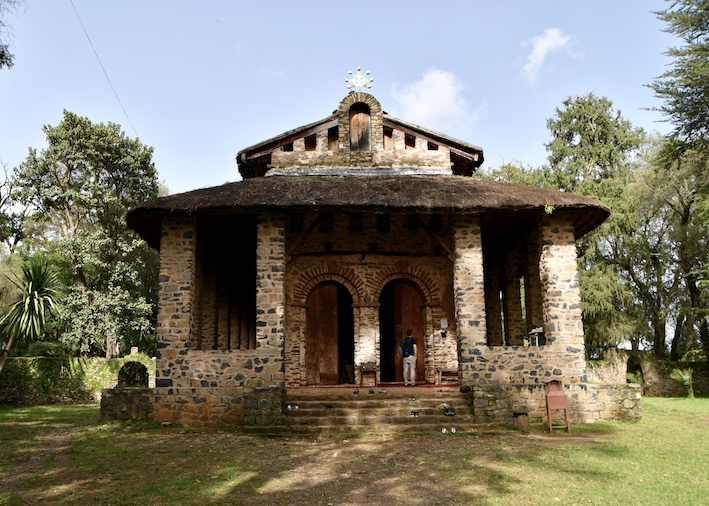
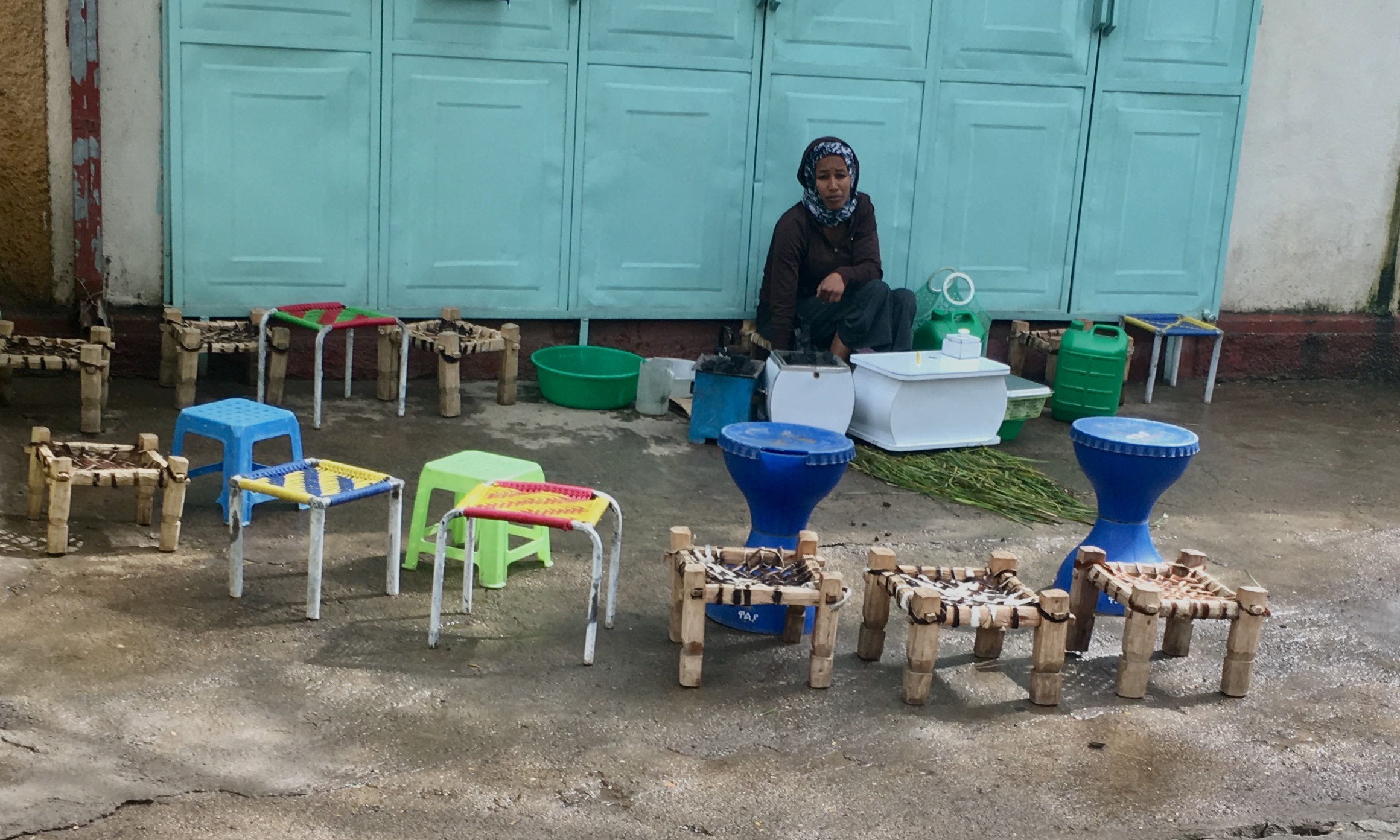

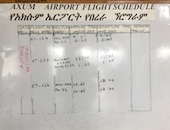


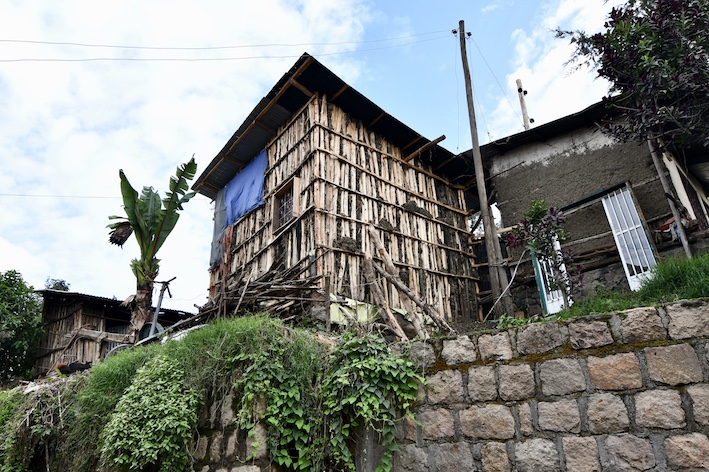



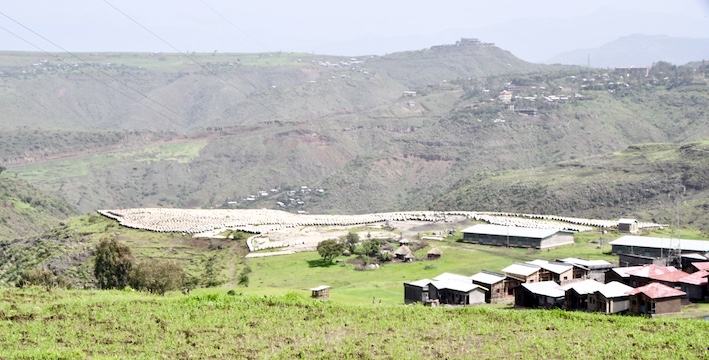






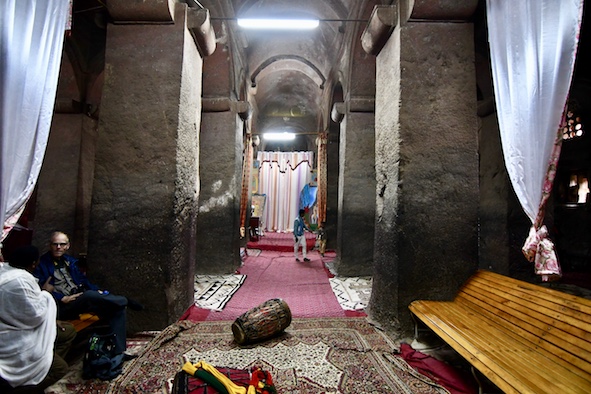













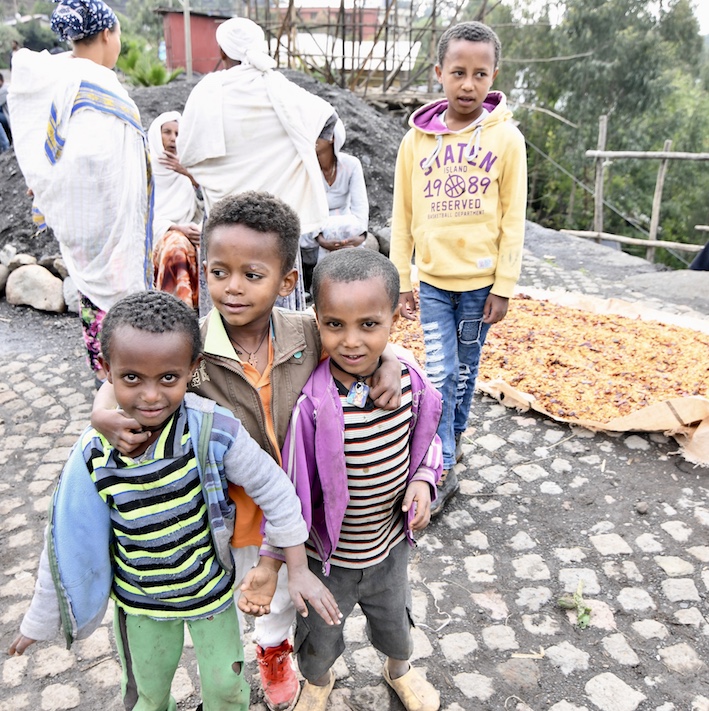




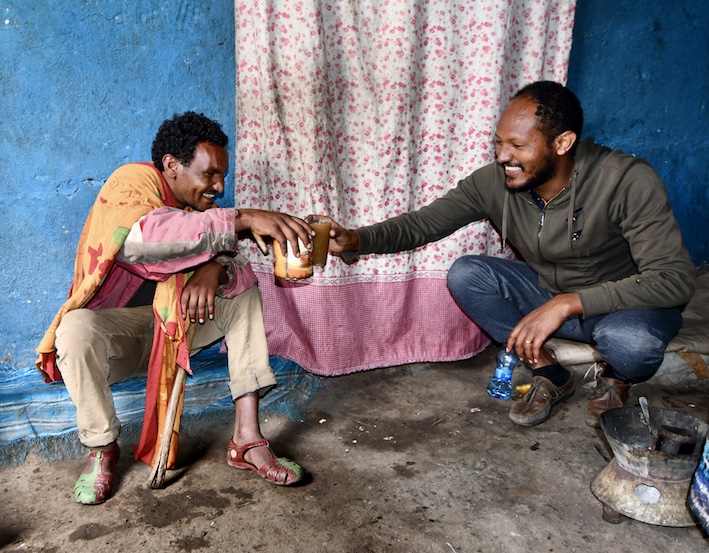





































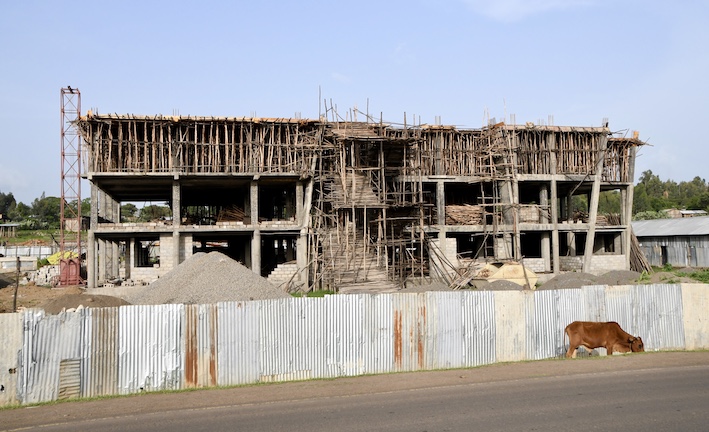




















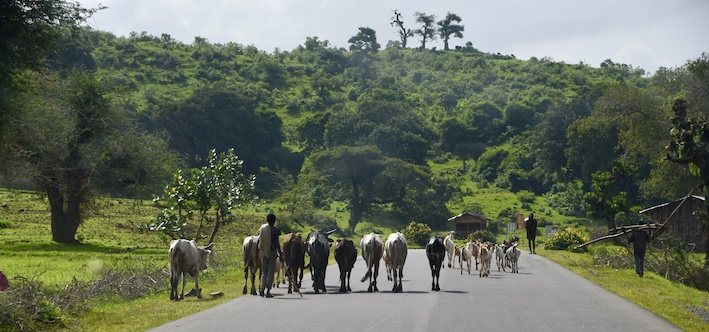
















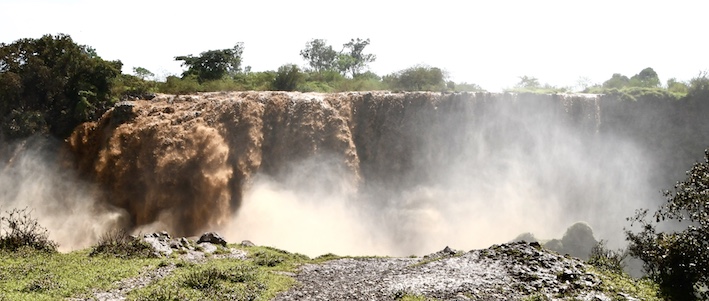







Your travel stories and photos are amazing. All about places most of us will never visit. We wait to see where you go next.
Another fantastic blog – thank you so much you two. You are an inspiration.
Safe travel onwards, and keep smiling! Xxx
Fantastic times for you both. Amazingly recalled thank you for sharing . ????
Extraordinary area – I’m surprised by how green it is. I always imagined it to be almost baron soil for some reason. Great pics.
Great story.